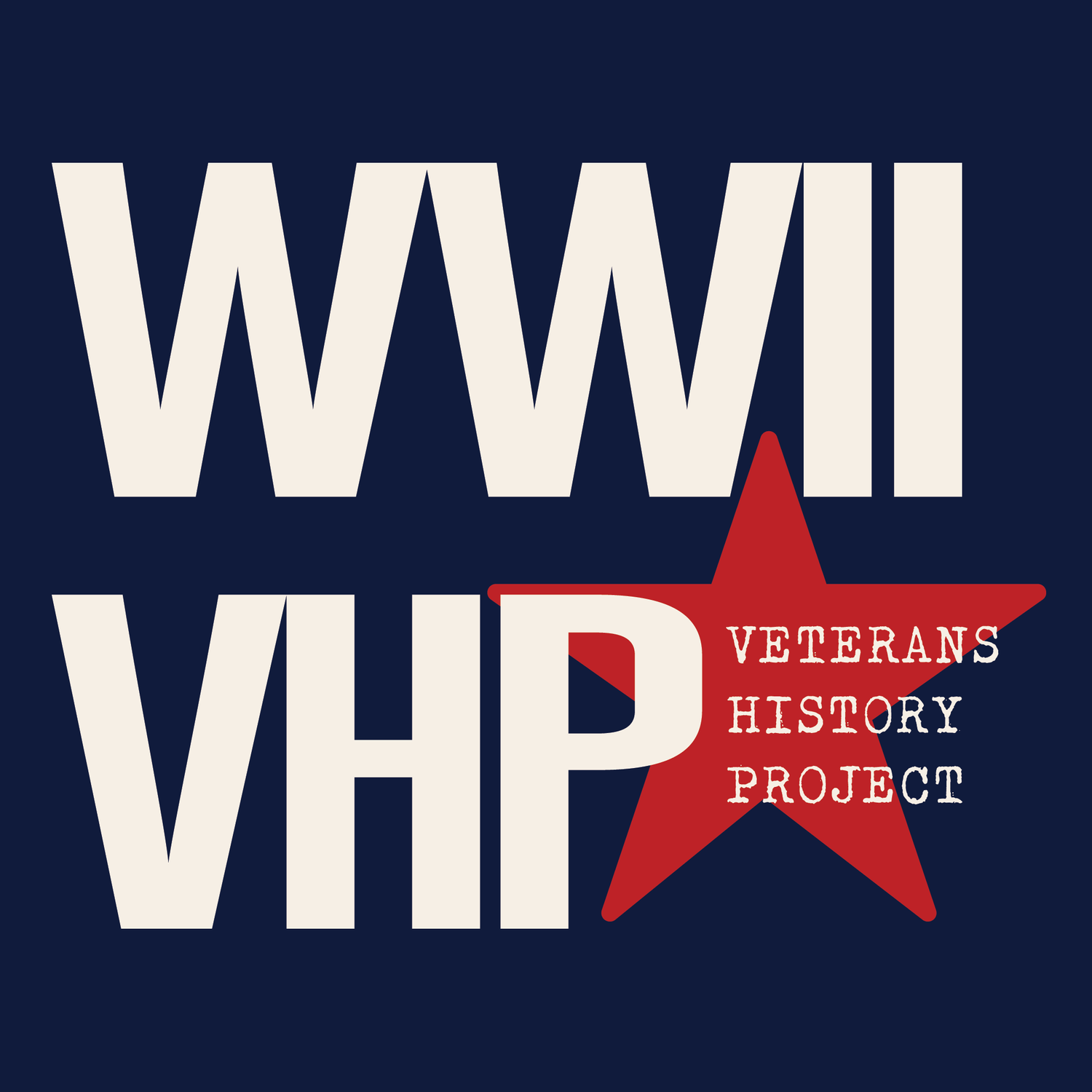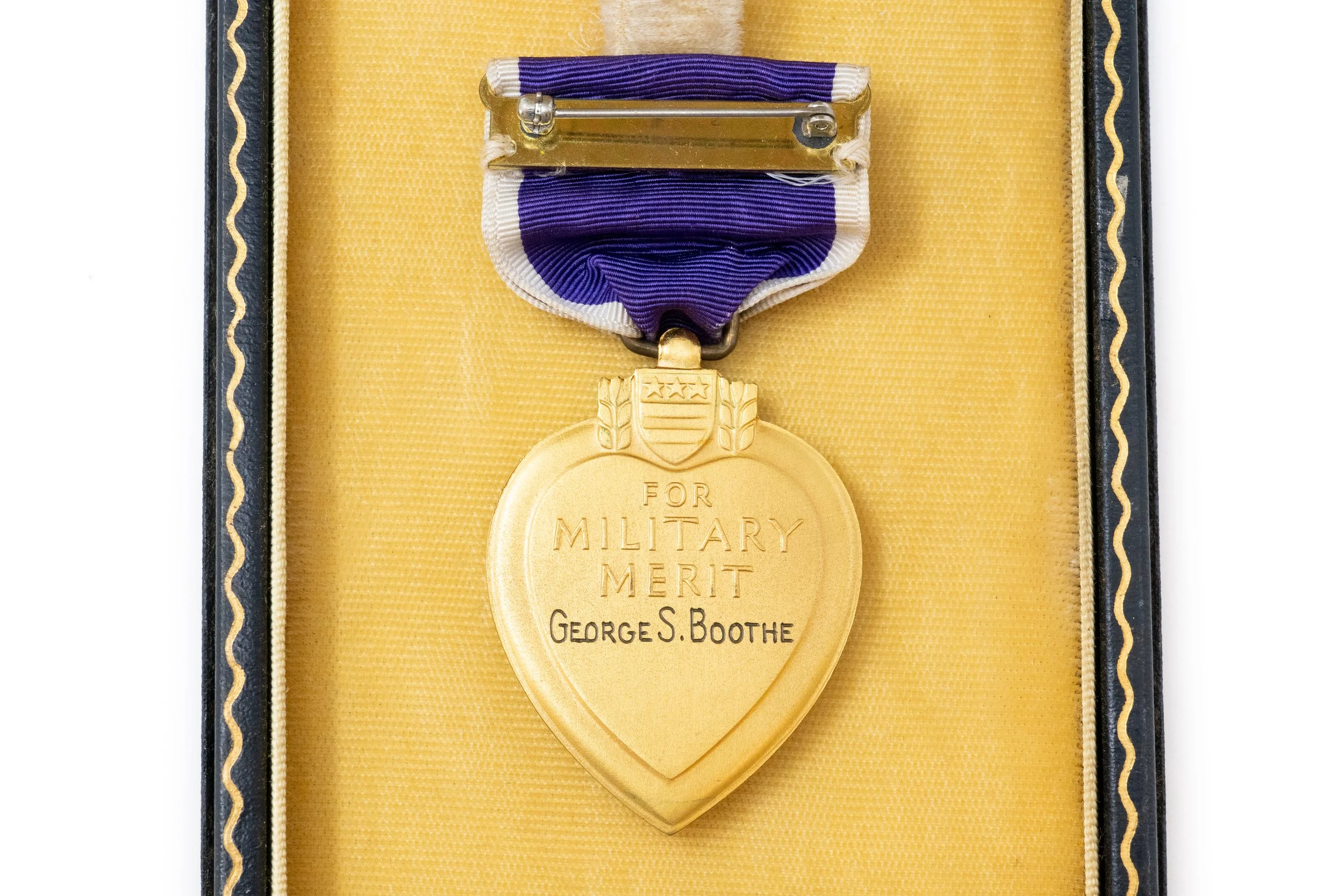George S. Boothe: Paratrooper Wounded in the Pacific War
George S. Boothe’s Purple Heart, awarded for wounds received in action in 1945. Medal from the Winter Park History Museum collection.
by Aidan Sigmund
The WWII Veterans History Project recently explored their collections of the Winter Park History Museum in Winter Park, Florida. Together, we’re honored to share the story of George S. Boothe, a WWII paratrooper whose Purple Heart now resides in their museum collection.
George Shaffer Boothe was born February 24, 1914, in Kokomo, Indiana, the third child of Newton and Anna Boothe. George’s father was a veteran of the U.S. Army, serving from 1902 to 1905 in the Hospital Corps. The family moved to Jacksonville, Florida about 1930. In 1936, the family relocated to Orlando and George took up work at a local restaurant, the Greentree Grill. In 1941, he married Ms. Eunice Kerce.
Boothe remained in Orlando until December 20, 1942 when he was drafted into the US Army, mustering in at Camp Blanding, Florida. He was soon selected for paratrooper training and assigned to Company A of the 511th Parachute Infantry Regiment. Stateside, Boothe and his comrades underwent rigorous training exercises throughout the South, preparing them for combat in the Pacific Theater. While stationed at Camp Polk, Louisiana, he was awarded the newly established Expert Infantryman Badge on March 17, 1944. Only a few days later the 511th, along with its parent unit the 11th Airborne Division, was moved to Camp Stoneman in California.
The men of the 11th Airborne waited anxiously at Camp Stoneman until the beginning of May when they received orders to board the SS Sea Pike. Following a 3-week journey across the Pacific Ocean, they arrived in New Guinea.
Disembarking from the Sea Pike, the 511th made their way ashore and moved inland to Dobodura Airfield where they trained until November of 1944. The 11th Airborne’s time in New Guinea helped familiarize them with the harsh environments they would be fighting in throughout the war. Departing from New Guinea on November 11, 1944, the 11th Airborne sailed to Leyte in the Philippine Islands where they came ashore on the 18th. A few days later, Boothe’s unit received its first combat orders. They were to head inland and relieve the weary men of the 7th Infantry Division.
Departing on November 21st, they pushed through the jungle, establishing a small airfield on the 30th which helped with the flow of supplies. Despite their determination, progress was slow. Near constant rainfall, hostile terrain, and sporadic enemy resistance stifled their advance. Nonetheless, they reached the 7th Infantry Division and began relieving them by the end of December, 1944. Returning to base camp on Christmas Day, the 511th had completed its first combat operation.
Following their success on Leyte, the 11th Airborne was tasked with assaulting the island of Luzon. The majority of the Division disembarked from boats in January of 1945, however Boothe’s unit did not join them. Instead, Boothe and the other troopers in the 511th Parachute Infantry received news that they were going to make a parachute drop onto Tagaytay Ridge, south of Manila. This jump would secure the advance of the 11th Airborne Division as it pushed into the Philippine capital. The operation began on February 3, 1945, with the 511th successfully jumping onto Tagaytay Ridge, where they held the position and waited for the rest of the 11th Airborne to arrive. Once the two elements linked up, they began marching into Manila on February 4, with Boothe and his unit forming the vanguard of the advance.
As they moved into the city, the 11th Airborne was initially met with very little resistance. In fact, many of the locals came out and lined the street to celebrate. That changed as they reached the area surrounding Nichols Field. Japanese forces had been fortifying the position and soon began an all-out assault on the American paratroopers. Through machine gun, mortar, and artillery fire, the 511th managed to flank and eliminate a number of Japanese pillboxes that were keeping the Division pinned down. By February 10, the Japanese had been routed from Nichols Field and the area was secured.
Despite the intense fighting and considerable advances they had made, the fight for Manila was far from over. On February 13, 1945, Boothe was seriously wounded by shrapnel from an artillery shell, fracturing multiple bones across his back and chest. After preliminary treatment, he was evacuated back to the US due to the severity of his wounds. Upon release from the hospital in July of 1945, he was discharged with the rank of Private First Class. For his service, he was awarded the Purple Heart, Expert Infantryman Badge, Combat Infantryman Badge, and the Asiatic-Pacific Campaign Medal.
Following his service, George Boothe returned to Florida and began working for the Orlando Sunday Sentinel Star as a newspaper carrier. He lived in Winter Park for the rest of his life, passing away on August 12, 1960 at the age of 46. He is buried at Palm Cemetery in Winter Park, Florida.

